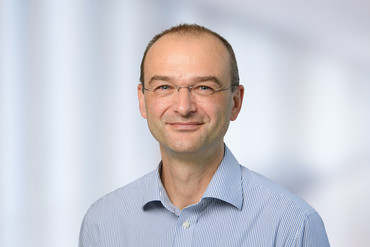New gene therapy for children born deaf in clinical trials

(umg/mbexc) According to the Center for Disease Control and Prevention (CDC), hearing loss affects around one to two in every 1,000 newborn children, making it one of the most common congenital sensory impairments. To date, over 140 different genes are known whose defects lead to hearing loss. In otoferlin-related hearing loss, a defect in the OTOF gene prevents the production of the protein otoferlin in affected persons. Otoferlin is involved in the transmission of sound information from the hair cells to the auditory nerve in the inner ear. If otoferlin is missing, the sound cannot be transmitted at the contact points between the hair cells and the auditory nerve, the so-called synapses. The sound information therefore does not reach the auditory center in the brain. For this reason, affected persons are not able to hear.
Prof. Dr. Tobias Moser, director of the Institute for Auditory Neuroscience at the University Medical Center Göttingen (UMG) and spokesperson of the Göttingen Cluster of Excellence "Multiscale Bioimaging: From Molecular Machines to Networks of Excitable Cells" (MBExC), and his team in collaboration with the group led by Prof. Dr. Christine Petit, Pasteur Institute, Paris, demonstrated this key role of otoferlin at the synapses around 20 years ago.
Since then, Prof. Tobias Moser and scientists from the former Göttingen Collaborative Research Center 889 "Cellular Mechanisms of Sensory Processing" (CRC889) and the Cluster of Excellence MBExC, both funding programs of the German Research Foundation, have contributed significantly to the elucidation of the function of otoferlin and the understanding of synaptic disease mechanisms in the inner ear. In contrast to other forms of genetic hearing loss, the hair cells of the cochlea remain intact for years, so that a causal therapy is possible. Similar disease mechanisms have now also been identified for other genetic and acquired forms of hearing loss.
About seven years ago, Prof. Dr. Ellen Reisinger, now a professor at the University of Tübingen, and other scientists from the Göttingen InnerEarLab and the CRC889 succeeded in partially restoring
hearing in deaf mice with otoferlin-induced synaptic hearing loss using gene therapy. The correct genetic blueprint for the production of the otoferlin protein was introduced into the hair cells of the cochlea using non-pathogenic viruses and partial restoration of synapse and hearing function was demonstrated. Since then, intensive research on this therapeutic approach has continued in Göttingen, including the German Primate Center - Leibniz Institute for Primate Research (DPZ), and many other places. At the DPZ, the efficacy and safety of gene therapy will now be further investigated in genetically modified common marmosets with Otoferlin-induced hearing loss.
In a global competition with significant participation from start-up companies in the USA, France and China, intensive work has been carried out on transferring the gene therapy approach for application in patients. The first clinical trials on gene therapy for otoferlin-induced synaptic hearing loss have recently begun and promising initial results have now been published (DOI: 10.1002/advs.202306788; DOI: 10.1016/S0140-6736(23)02874-X). So far, no serious adverse side effects of gene therapy have been identified. As derived from the work on the mouse model, the previously severely hearing impaired or deaf children treated with gene therapy were able to perceive sound and speech. There is currently insufficient data available on how good speech comprehension is in everyday life.
A patient registry for otoferlin-induced synaptic deafness has also been set up at the UMG and the Göttingen Cluster of Excellence MBExC in order to provide affected families with comprehensive information and to be able to offer optimal gene therapy in the future. There is a good chance that curative treatment will be possible for at least some forms of deafness.
The proof of concept for gene therapy of the inner ear is also of great importance for the development of the optogenetic cochlear implant. This technology has been under development in Göttingen since 2008 and should enable better hearing than the current electrical cochlear implants, largely regardless of the cause of deafness. Using gene therapy of the inner ear, light-sensitive proteins are incorporated into the auditory nerve so that it can be activated by light stimuli from an optical cochlear implant - hearing with light becomes possible.
"After many years of research, we are now witnessing the beginning of a causal therapy for diseases of the inner ear. Research in Göttingen, including at the Cluster of Excellence, makes a significant contribution to this," says Prof. Dr. Tobias Moser.
Further information:
Information on the patient registry for otoferlin-induced synaptic deafness:
http://www.auditory-neuroscience.uni-goettingen.de/registry_info_en.html
CONTACT
University Medical Center Göttingen, Georg-August-University
Institute for Auditory Neuroscience
Prof. Dr. Tobias Moser
Robert-Koch-Str. 40, 37075 Göttingen
Phone +49 551 / 39-63071
tmoser(at)gwdg.de
Cluster of Excellence Multiscale Bioimaging (MBExC)
Dr. Heike Conrad (Contact – Press releases)
Phone +49 551 / 39-61305
heike.conrad(at)med.uni-goettingen.de